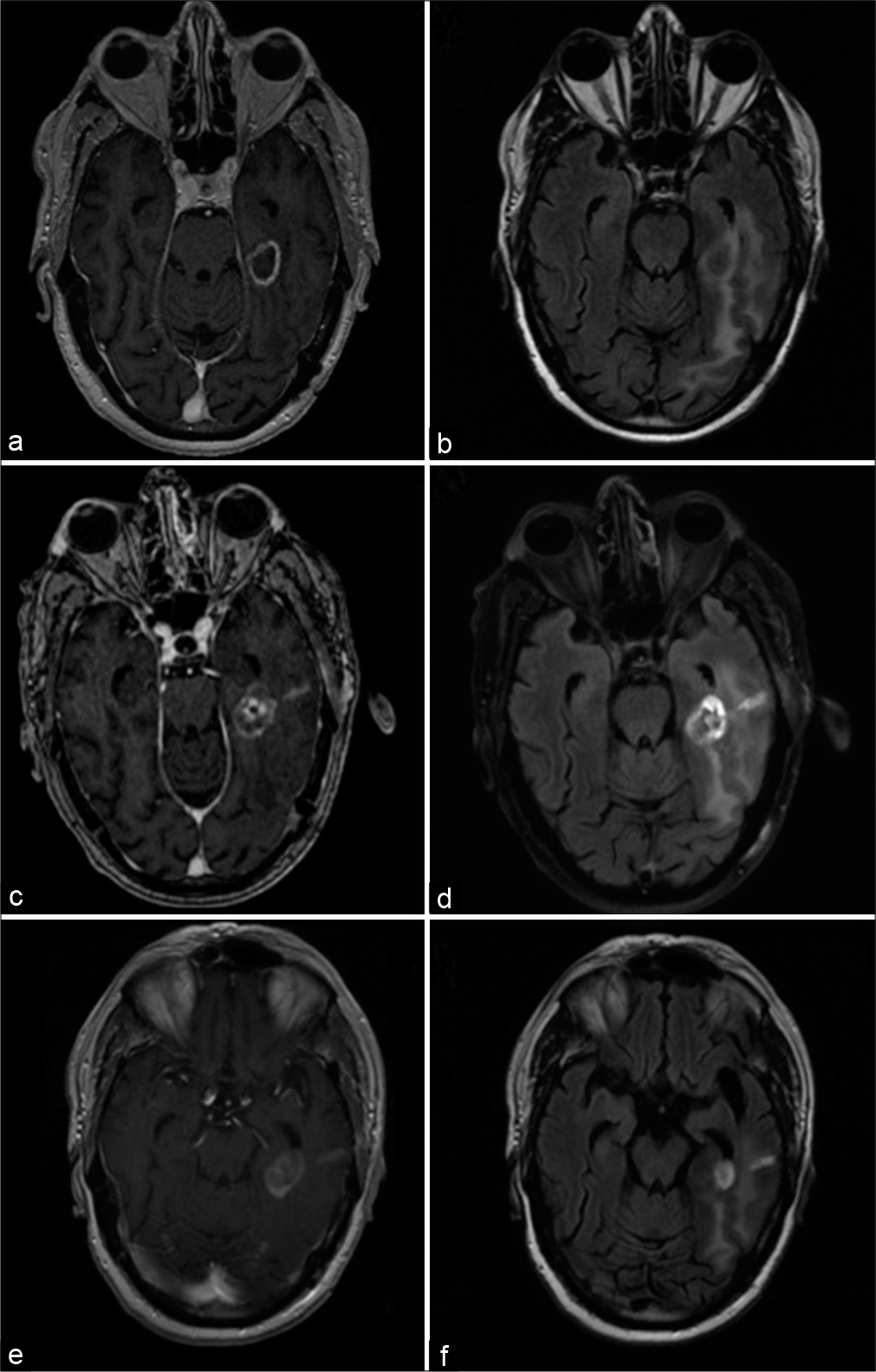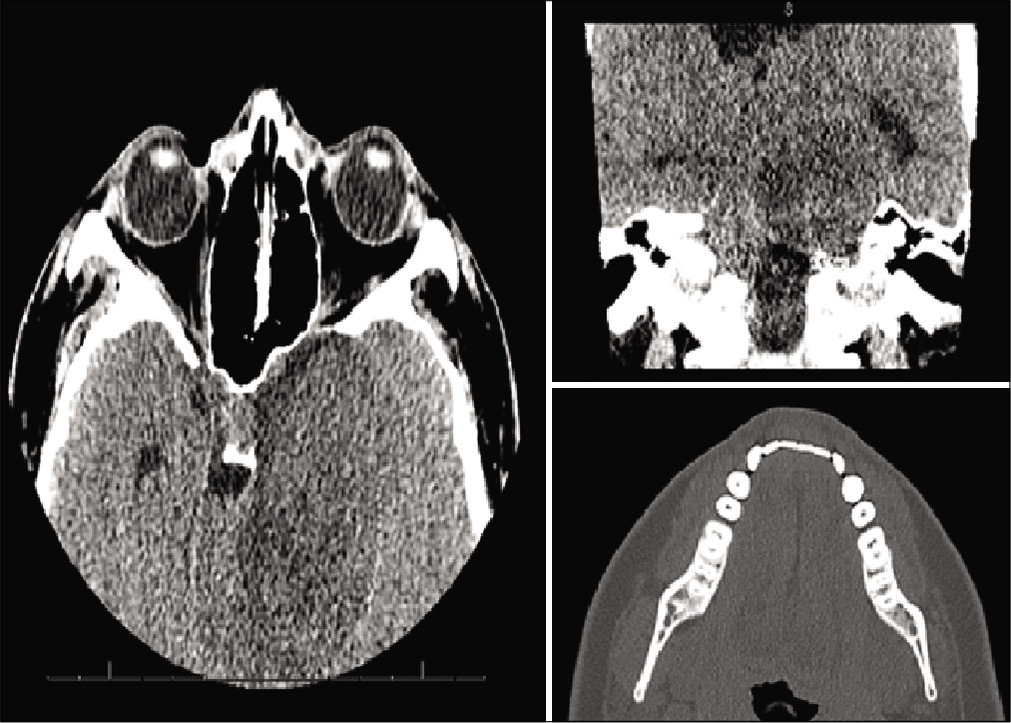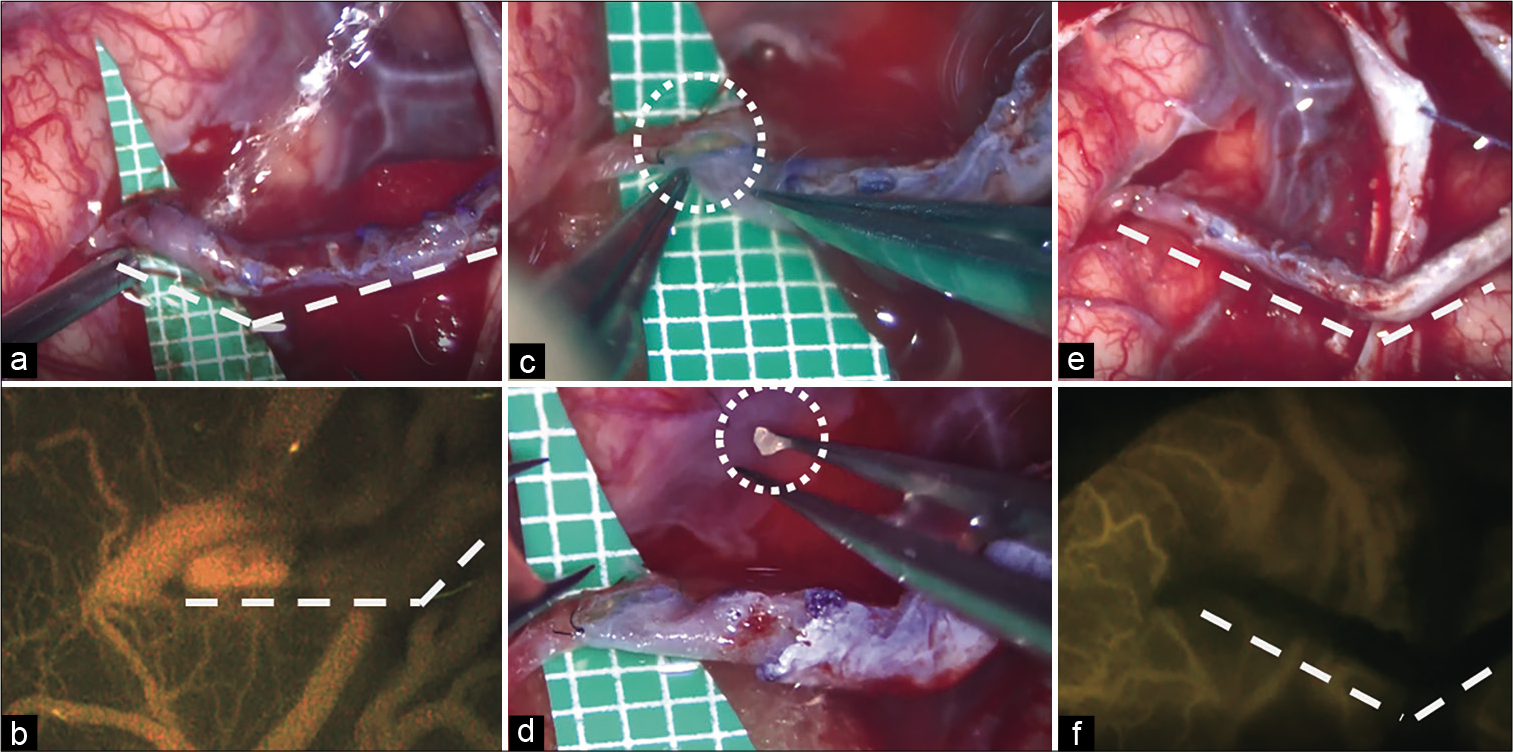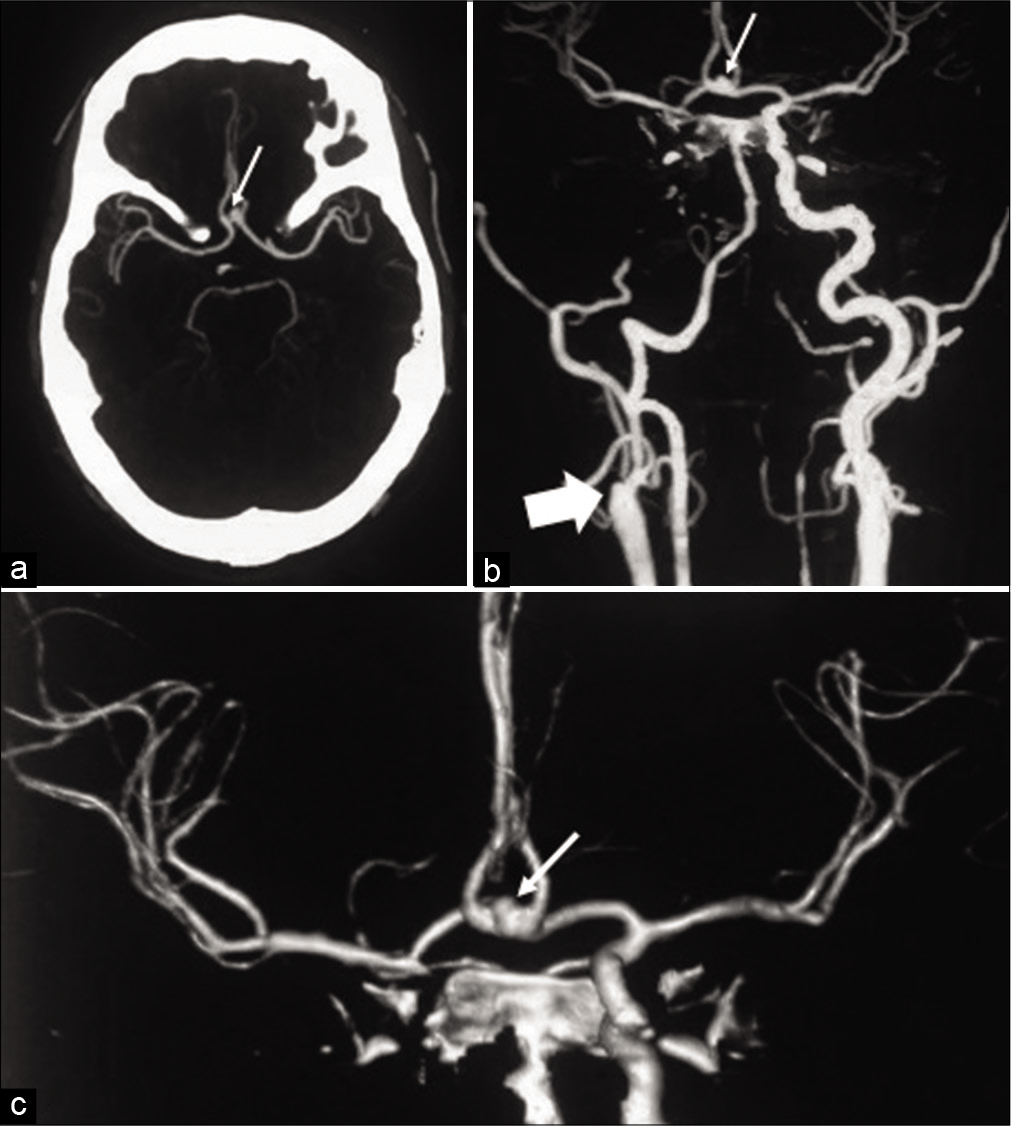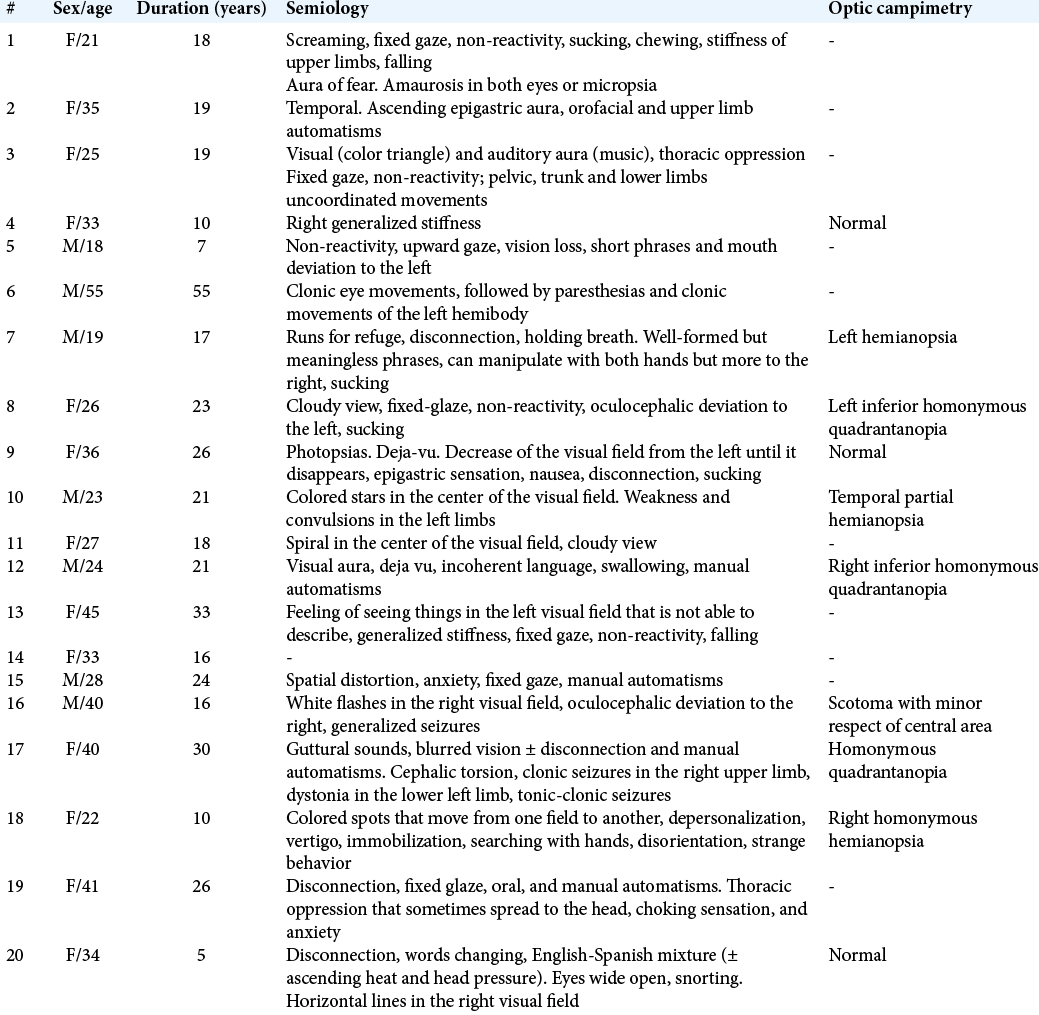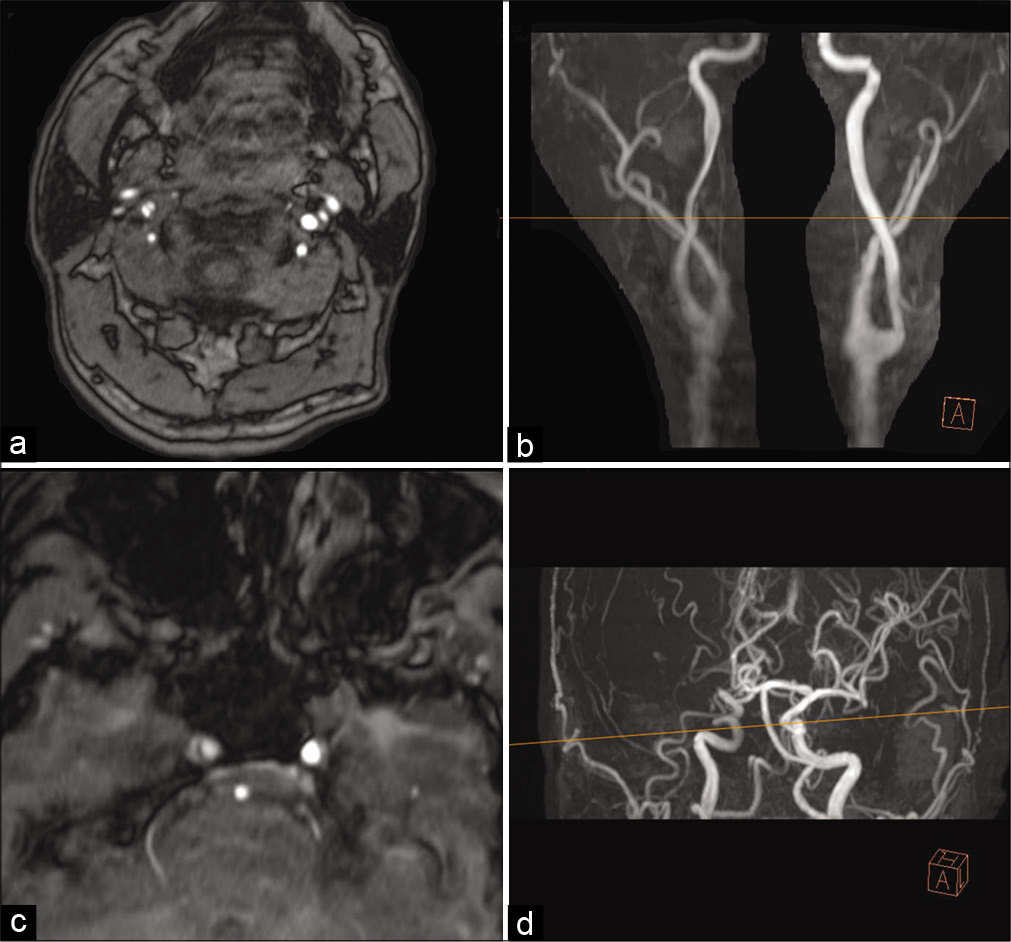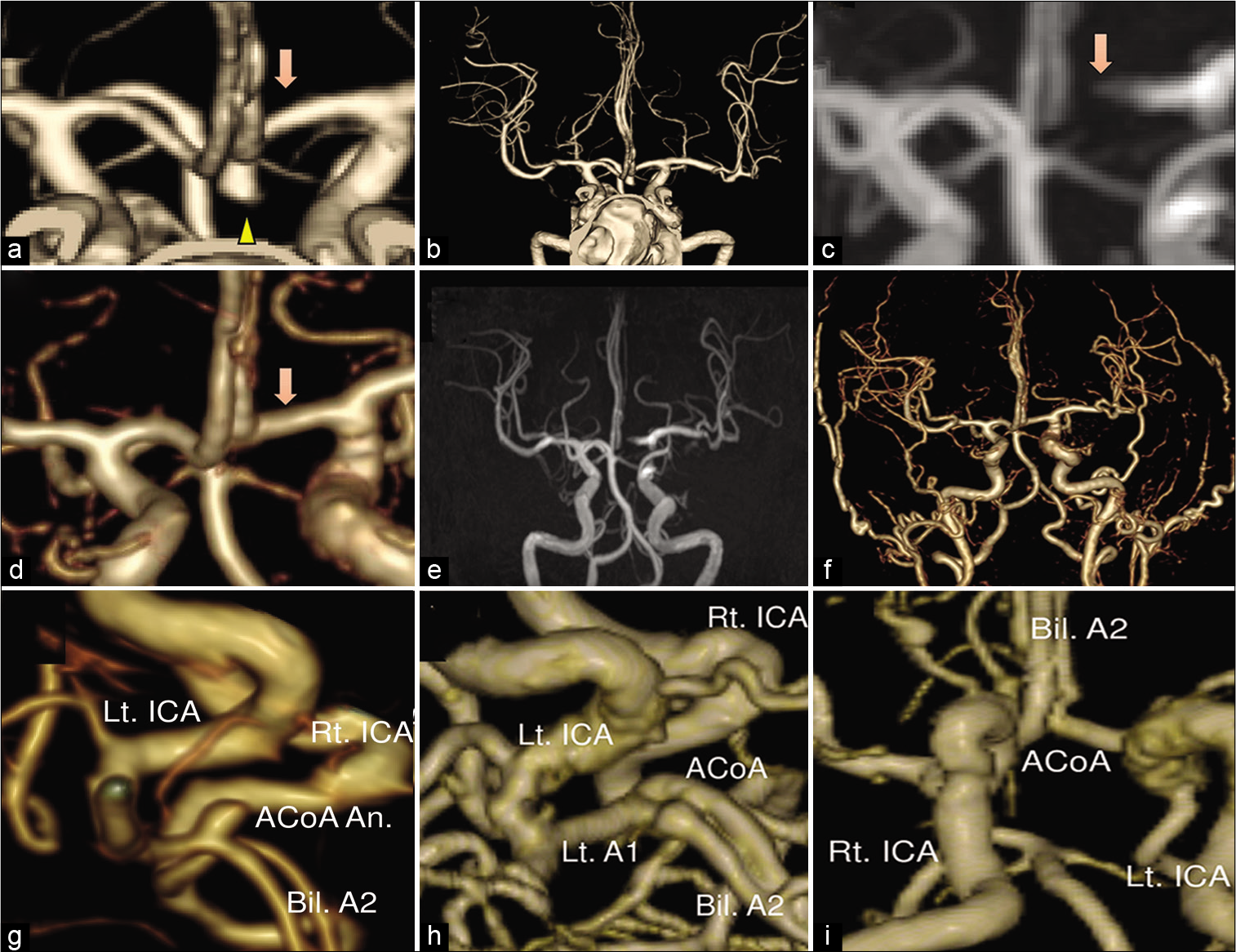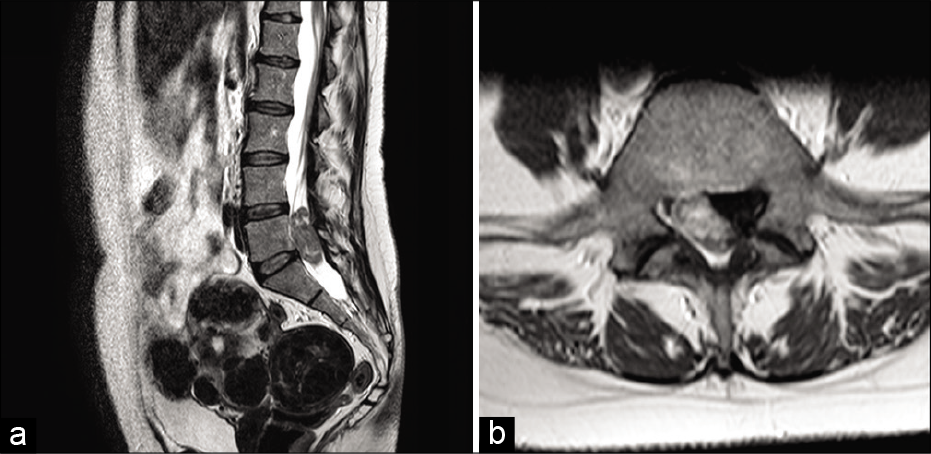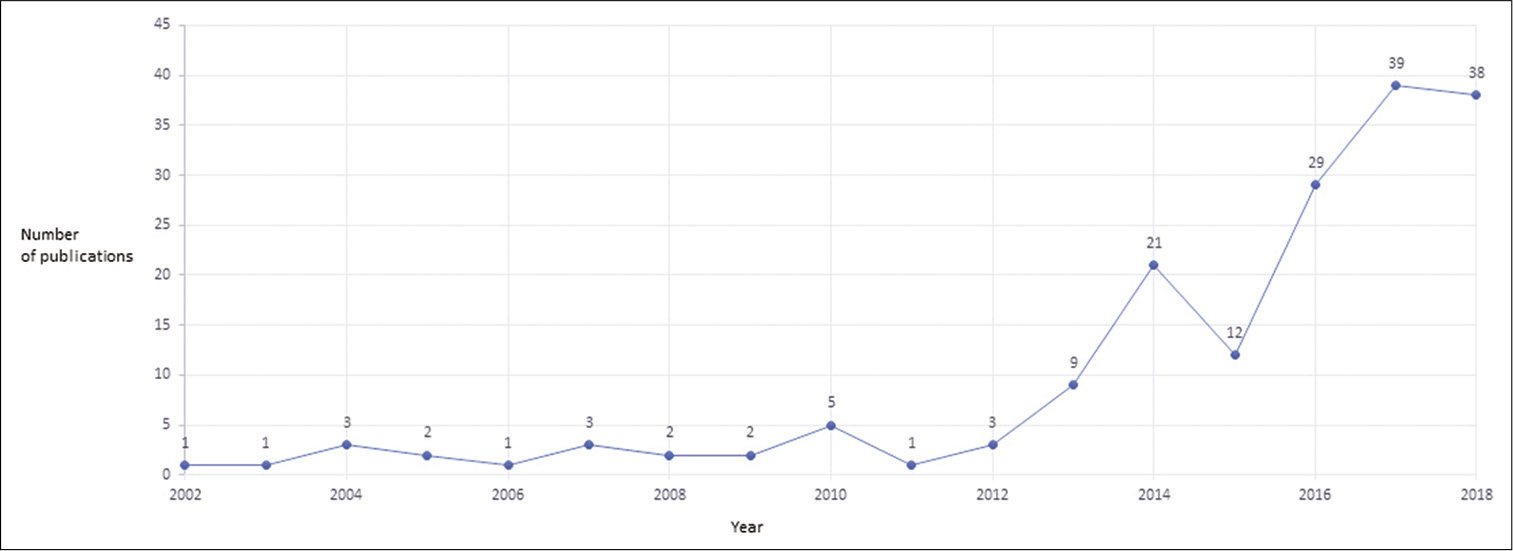Laser interstitial thermal therapy in neuro-oncology applications
Date of publication: 08-Aug-2020
Background: Laser interstitial thermal therapy (LITT) is a minimally invasive surgical treatment for multiple intracranial pathologies that are of growing interest to neurosurgeons and their patients and is emerging as an effective alternative to standard of care open surgery in the neurosurgical armamentarium. This option was initially considered for those patients with medical comorbidities and lesion-specific characteristics that confer excessively high risk for resection through a standard craniotomy approach but indications are changing.
Trigeminal schwannoma presenting with malocclusion: A case report and review of the literature
Date of publication: 08-Aug-2020
Background: Trigeminal schwannomas are rare tumors of the trigeminal nerve. Depending on the location, from which they arise along the trigeminal nerve, these tumors can present with a variety of symptoms that include, but are not limited to, changes in facial sensation, weakness of the masticatory muscles, and facial pain.
Delayed reopening of a superficial temporal artery to middle cerebral artery bypass graft occluded by a white thrombus during surgery
Date of publication: 01-Aug-2020
Background: To the authors’ knowledge, reopening of a superficial temporal artery to middle cerebral artery (STA-MCA) bypass graft occluded by a white thrombus during the procedure and was observed several months after the surgery is relatively rare.
Unilateral absence of the internal carotid artery associated with anterior communicating artery aneurysms: Systematic review and a proposed management algorithm
Date of publication: 01-Aug-2020
Background: Absence or hypoplasia of the internal carotid artery (ICA) is a rare congenital anomaly that is mostly unilateral and highly associated with other intracranial vascular anomalies, of which saccular aneurysm is the most common. Blood flow to the circulation of the affected side is maintained by collateral pathways, some of which include the anterior communicating artery (Acom) as part of their anatomy. Therefore, temporary clipping during microsurgery on Acom aneurysms in patients with unilateral ICA anomalies could jeopardize these collaterals and place the patient at risk of ischemic damage. In this paper, we review the literature on cases with a unilaterally absent ICA associated with Acom aneurysms and provide an illustrative case.
Evolution of patients with surgically treated drug-resistant occipital lobe epilepsy
Date of publication: 01-Aug-2020
Background: This study was to describe the evolution of patients who underwent surgical treatment of drug- resistant occipital lobe epilepsy (OLE) at our institution.
Microsurgical embolectomy with superficial temporal artery-middle cerebral artery bypass for acute internal carotid artery dissection: A technical case report
Date of publication: 01-Aug-2020
Background: Dissection of the internal carotid artery (ICA) is an important cause of stroke. Intravenous alteplase administration and mechanical thrombectomy have been strongly recommended for selected patients with acute ischemic stroke. However, the efficacy and safety of these treatments for ischemic stroke due to ICA dissection remain unclear. Here, we report a case of acute ICA dissection successfully treated by microsurgical embolectomy.
Three tesla magnetic resonance angiography with ultrashort echo time describes the arteries near the cerebral aneurysm with clip and the peripheral cerebral arteries
Date of publication: 01-Aug-2020
Background: The assessment of the clipped cerebral aneurysm and the cerebral arteries after the treatment of subarachnoid hemorrhage (SAH) is important to find aneurysm regrowth or postoperative cerebral vasospasm. Usually, contrast-enhanced computed tomography angiography is performed for the evaluation of the arteries, but it has side effects of contrast medium. Time-of-flight magnetic resonance angiography (MRA) is a fast and non-invasive method, but clip-induced artifact limits assessment of the artery in the vicinity of the clip. 1.5T MRA with ultrashort echo time (UTE) reduces metal artifact, but the obtained image is too rough to evaluate the aneurysm remnant, and the description range is too narrow to assess the cerebral vasospasm. We routinely use SIGNA Pioneer 3.0T (GE Healthcare Life Sciences, Buckinghamshire, England) and perform SILENT SCAN with UTE-MRA for the postoperative assessment of the clipped aneurysm and cerebral arteries for SAH patients treated by clipping. It has better image quality and describes arteries with a wide description range, so it possesses the potential to overcome the disadvantages of 1.5T UTE-MRA.
Cauda equina syndrome caused by lumbar leptomeningeal metastases from lung adenocarcinoma mimicking a schwannoma
Date of publication: 01-Aug-2020
Background: Cauda equina syndromes (CESs) due to leptomeningeal metastases from primitive lung tumors are rare. Despite recent advancements in neuro-oncology and molecular biology, the prognosis for these patients remains poor. Here, we present a case in which a patient developed lumbar leptomeningeal metastases from lung carcinoma that contributed to a CES and reviewed the appropriate literature.
Causes of hospital readmissions within 7 days from the neurosurgical service of a quaternary referral hospital
Date of publication: 01-Aug-2020
Background: Evaluation of readmission rates as a proxy metric of health-care quality in neurological surgery has grown to become a prevalent area of investigation in the last several years. Significant attention has been paid to 30-day readmission rates due to the financial incentive to health-care providers following the enforcement of the penalties created by the Affordable Care Act. However, relatively little attention has been paid to patients readmitted within 7 days of discharge to large quaternary neurological surgery services. This study was conducted to examine the causes and unique characteristics of 7-day readmission rates from a neurosurgical service at a large quaternary referral hospital.
Pure endoscopic transsphenoidal treatment of skull base ameloblastoma with intracranial extension: Case report and literature review
Date of publication: 01-Aug-2020
Background: Ameloblastoma is a benign locally invasive lesion that represents 1% of all oral tumors. Epidemiological characteristics are variable in the literature. The most common origin sites are mandible and maxilla. Rarely presents metastasis, but the skull base, lymph nodes, and the lung are described as metastatic sites. Low recurrence rates were reported by the authors when surgical treatment achieved complete resection.


